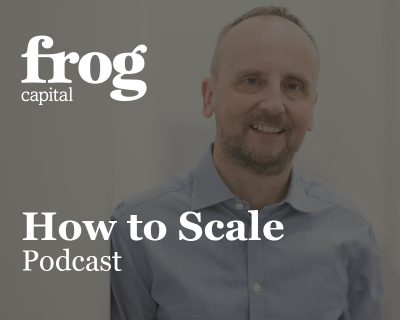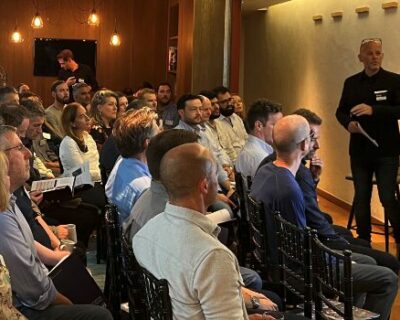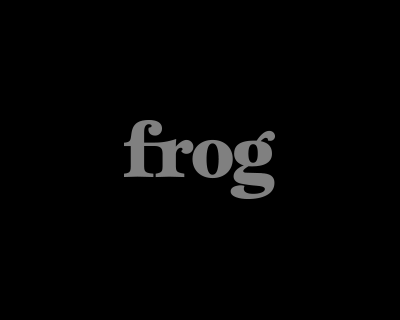Frog applies its core value of creating resilience both to portfolio companies and to the Funds under management. The key elements for each are respectively
- investing in software companies from diverse sectors and countries, with strong defensible characteristics such as product importance to the client, capital efficiency and proven business model, and
- structuring deals in such as way as to provide returns protection for the Fund in a portfolio company downside scenario.
A fundamental part of the resilience thesis is that companies can best pursue aggressive growth when they are doing so from a position of strength. Investing for upside growth is a common theme for all VCs but often without enough clarity between genuine growth investment and speculative funding of losses.
Frog portfolio companies know their route to profitability, even when it is not the preferred option, because this backstop provides excellent downside protection against recession or volatile funding markets. It also categorically identifies growth investment over and above the route to profitability scenario.
The Fund level equivalent is structuring investments so that the possibility of returning less than 1x money is remote. Management will accept the terms only if they also agree that the downside scenario is remote given the disproportionate impact on the value of their shareholding if the defensive structure for Frog applies. This allows a degree of flexibility in how we assess risk and reward on the upside. We align better with management, for whom this is a ‘one– shot’ opportunity, than with aggressive early stage VCs, whose all or nothing approach only works on a portfolio basis.
Our expectation of a 3x minimum return to LPs for FEG I is broadly based on all 9 portfolio companies contributing above 1x, most returning 2x to 5x times with a couple having the realistically possibility to be 10x. If we had pushed all to go for 10x plus, the failure rate might be as high as 50% for possibly only one more out-performer. There would definitely be a lot more disappointed entrepreneurs and higher volatility of returns.
Structured equity
The key principle of structured equity is simple; investing in an instrument that has a preferred return before the ordinary equity, such that if the company was wound up or sold, the preferred equity holders gets all their money back before any other equity participants get anything. In Private Equity, a similar result is achieved by structuring investments mainly as loan notes with a thin slice of pure equity. Venture Capital backed firms are not able to service loan notes so a preferred equity instrument with “liquidity preference” is the alternative at the growth investing stage.
The best way to ensure consistent returns is to invest at good prices in top quality businesses that deliver what they promise. This is easier to assess at growth stage than early stage as there is more visibility of earnings and more evidence of team and business model quality, but the reality is that we are in a risk business and that the only way high returns are justified is by the risk we are taking.
In terms of company performance, Frog mitigates the risk by being close to the business, influencing from a position of inside knowledge (we always take a board seat but also have multiple channels of contact to influence outside the board meeting) and applying credible, relevant experience within the proven scale-up methodology structure. Nevertheless, there will still be times when too many market headwinds or unexpected competitor behaviour prevent significant enterprise value growth. In these circumstances, the investment instrument structure is critical to protecting fund level return.
As an example, a business we recently sold had a liquidation preference in place such that to get our £6m investment back, the equity value of the business needed to be £8m. Based just on our equity shareholding with no liquidity preference the money back equity value was £47m. It is worth noting that publicly stated funding round post money valuations are always based on the value implied by the investment amount and the equity stake. As in the example above, our money back value will normally be a fraction of that public number, in this case 17%. As with this case, the best outcome comes when the liquidation preference is participating, that is it takes the preferential return and then participates in the equity split above that level pro rate to the equity holding.
Non–participating means that the preference share holder has to choose either
- the preferred return, or
- to participate in the equity split
This creates a range of equity values below the original post money funding valuation where return to the investor is flat, though not necessarily at 1x depending on the original deal terms. The Frog default position is that we should have a higher multiple in the early years, or include an interest on the preferred return, to protect against a founder deciding to cash in early before the Frog backed strategy has started to create value.
PE v Growth risk mitigation
Some investors might assume that PE type majority control provides a route to mitigating risk but they are making some large implicit assumptions. Most obviously they are assuming that from the board position, PE investors can
- accurately diagnose what the problems are, and
- execute effectively a better solution
As someone who has transitioned from a PE portfolio director role to being CFO of a portfolio company, I can categorically say that there is huge risk in this due to the knowledge asymmetry between execs and non-execs about all the nuances of what makes a company perform or not at the coal face. In fact, the internal pressure in the PE firm to do something quickly potentially creates more risk of a rushed bad decision.
This is not to say you should never make changes, but rather that needs to be done by debating, influencing and creating coalitions for change with the various parties involved, not dictating from on high; quality mid-market PE firms acknowledge this. From personal experience I know that the reality of working in lower mid-market PE is really not that different from growth investing, whether you have a majority stake or not. The list of changes requiring investor consent (e.g. strategy change, funding, high level recruitment) is similar and given the collaborative syndicate nature of VC investing, the conditions for change to be less adversarial and more successful are probably better in growth than in lower mid-market PE.














